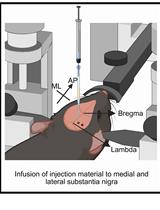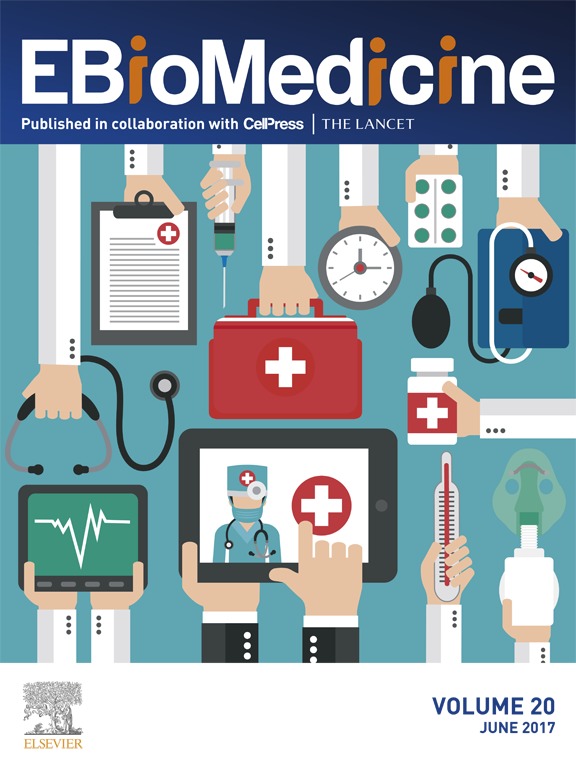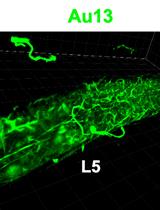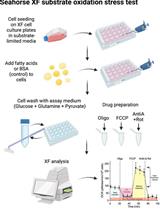- EN - English
- CN - 中文
Intra-amniotic Injection of Mouse Embryos
羊膜内注射小鼠胚胎
(*contributed equally to this work) 发布: 2018年05月20日第8卷第10期 DOI: 10.21769/BioProtoc.2854 浏览次数: 7048
评审: Nolwenn PasquetAnca SavulescuAnonymous reviewer(s)

相关实验方案

基于 rAAV-α-Syn 与 α-Syn 预成纤维共同构建的帕金森病一体化小鼠模型
Santhosh Kumar Subramanya [...] Poonam Thakur
2025年12月05日 1395 阅读
Abstract
Recent outbreaks of infectious neuro-developmental diseases such as congenital Zika syndrome - have led to a demand for prognosis data from animal models. We developed an intra-amniotic injection mice model that allows Zika virus (ZIKV) infected mice to grow to puberty. In this system, ZIKV is injected into the amniotic fluid of pregnant mice and infected embryos thereafter. ZIKV-infected mice show several symptoms of clinical ‘congenital Zika syndrome’, including decreased brain volume and mis-laminated retina. We also evaluated several behavioral functions of these ZIKV-infected mice, for example, after the mice reach puberty, they have visual and motor defects. This technique can be used to screen and evaluate drug candidates and may help evaluate the prognosis of infectious neuro-developmental diseases.
Keywords: Intra-amniotic (羊膜内)Background
It has been more than sixty years since the first human case of ZIKV infection was reported but in 2007 only 14 human cases of ZIKV infection had been recorded. Prognosis data have lagged far behind the recent outbreak of ZIKV in 2015. There is some evidence that mouse models may be effective for prognosis studies because previous reports have proved neurovirulence of ZIKV in mice. Therefore, various methods of ZIKV infection including intravenous injection, intraperitoneal injection, foot-pad injection and brain injection have been used to study congenital Zika syndrome in individuals during the embryonic period or infancy. The intra-amniotic injection model presented here has two advantageous features. First, wild-type mice (C57 BL/6J) can be used and studies are not limited to mice with immunologic deficiencies. Second, ZIKV infected mice can grow into puberty, which is beneficial to studies trying to evaluate prognosis.
Materials and Reagents
- Glass pipettes (World Precision Instrument, catalog number: 4878 )
- Sterile gauze (Winner Medical Group, catalog number: 016935 )
- Cotton ball (Winner Medical Group, catalog number: 50401050 )
- 1 ml Syringe (KDL, catalog number: 60017031 )
- 50 ml centrifuge tube (Corning, catalog number: 430828 )
- Dropper (Shanghai Baiqian Biotechnology, catalog number: J00082 )
- Suture needle (Ningbo Medical Needle Co., LTD, 7/0)
- Pregnant mouse (E15) (Shanghai Yison Biotechnology Company, strain: C57 BL/6J)
- 75% alcohol (Sinopharm Chemical Reagent, catalog number: 80176960 )
- Oxygen (Shanghai Lvmin Gas company, purity > 99%)
- Cyanoacrylate (Pattex®, catalog number: PSK12CT-2 )
- Isoflurane (RWD Life Science, catalog number: R510-22 )
- Iodophor (Shanghai Likang Disinfectant Hi-Tech, catalog number: 310100 )
- Lidocaine (MP Biomedicals, catalog number: 190111 )
- Ampicillin (Inalco, catalog number: 1758-9314 )
- Dulbecco’s modified Eagle’s medium (DMEM) (Corning, catalog number: 10-013-CV )
- 10% fetal bovine serum (FBS) (Biological Industries, catalog number: 04-001-1ACS )
- Pen-Strep Solution (Penicillin: 10,000 U/ml, Streptomycin: 10 mg/ml) (Biological Industries, ISRAEL, catalog number: 03-031-1B )
- Potassium phosphate monobasic (KH2PO4) (Sigma-Aldrich, catalog number: P5655 )
- Sodium phosphate dibasic dihydrate (Na2HPO4·2H2O) (Sigma-Aldrich, Fluka, catalog number: 71645 )
- Sodium chloride (NaCl) (Sigma-Aldrich, catalog number: S5886 )
- 0.1 M Phosphate buffer solution (PBS) (see Recipes)
- Ampicillin solution (see Recipes)
- Culture medium (see Recipes)
- 1% lidocaine solution (see Recipes)
Equipment
- Flaming/brown micropipette puller (Sutter Instrument, model: P-97 )
- Anesthesia machine (RWD Life Science, catalog number: R610 )
- Water bath (Jinghong Experimental Equipment, model: XMID-8222 )
- Tweezers (VETUS, catalog number: ST-11 )
- Scissors (RWD Life Science, catalog number: S12003-09 )
- Shaver (Codos, catalog number: KP-3000 )
Procedure
文章信息
版权信息
© 2018 The Authors; exclusive licensee Bio-protocol LLC.
如何引用
Cui, L., Zou, P., Meng, Q., Lu, L. and Zhang, J. (2018). Intra-amniotic Injection of Mouse Embryos. Bio-protocol 8(10): e2854. DOI: 10.21769/BioProtoc.2854.
分类
细胞生物学 > 细胞移植 > 胚胎移植
微生物学 > 微生物-宿主相互作用 > 病毒
神经科学 > 神经系统疾病 > 动物模型
您对这篇实验方法有问题吗?
在此处发布您的问题,我们将邀请本文作者来回答。同时,我们会将您的问题发布到Bio-protocol Exchange,以便寻求社区成员的帮助。
Share
Bluesky
X
Copy link










